Public events for URSS
Participating in a live event for the URSS public engagement element
One of the ways URSS students can engage the public with their research is by participating in a live event. Read on to learn from previous students' experiences.
Anna and Mimi
"Overall, this was a great opportunity which we learnt a lot from, and we would recommend anyone to do it if given the chance."
Photos of stalls
See public engagement stalls about students' research.
Student reflections
"First of all, it has been a massive confidence boost..."
Anna and Mimi
Anna Ceesay and Mimi de Trafford worked on a similar area of research for URSS 2022, and then they worked together to create a stall to engage the public with their topic at an event organised by the Warwick Institute of Engagement.
Our research
We both investigated the circadian cycle of plants and how these are affected by soil bacteria, but where the specifics of our research diverge is in the plant and bacteria species we investigated as well as the methodological approaches.
Anna
I investigated how the circadian clock of legumes impacted the production of metabolic components, specifically starch, when engaged in a symbiotic relationship with nitrogen-fixing soil bacteria called rhizobia. This causes the formation of nodules in the plant root, where the bacteria can produce nitrogen that can be used by the plant. From growing the plants in this symbiotic relationship I was eventually able to extract the roots and analyse how the starch product differed by the rhizobia and cycle types implemented.
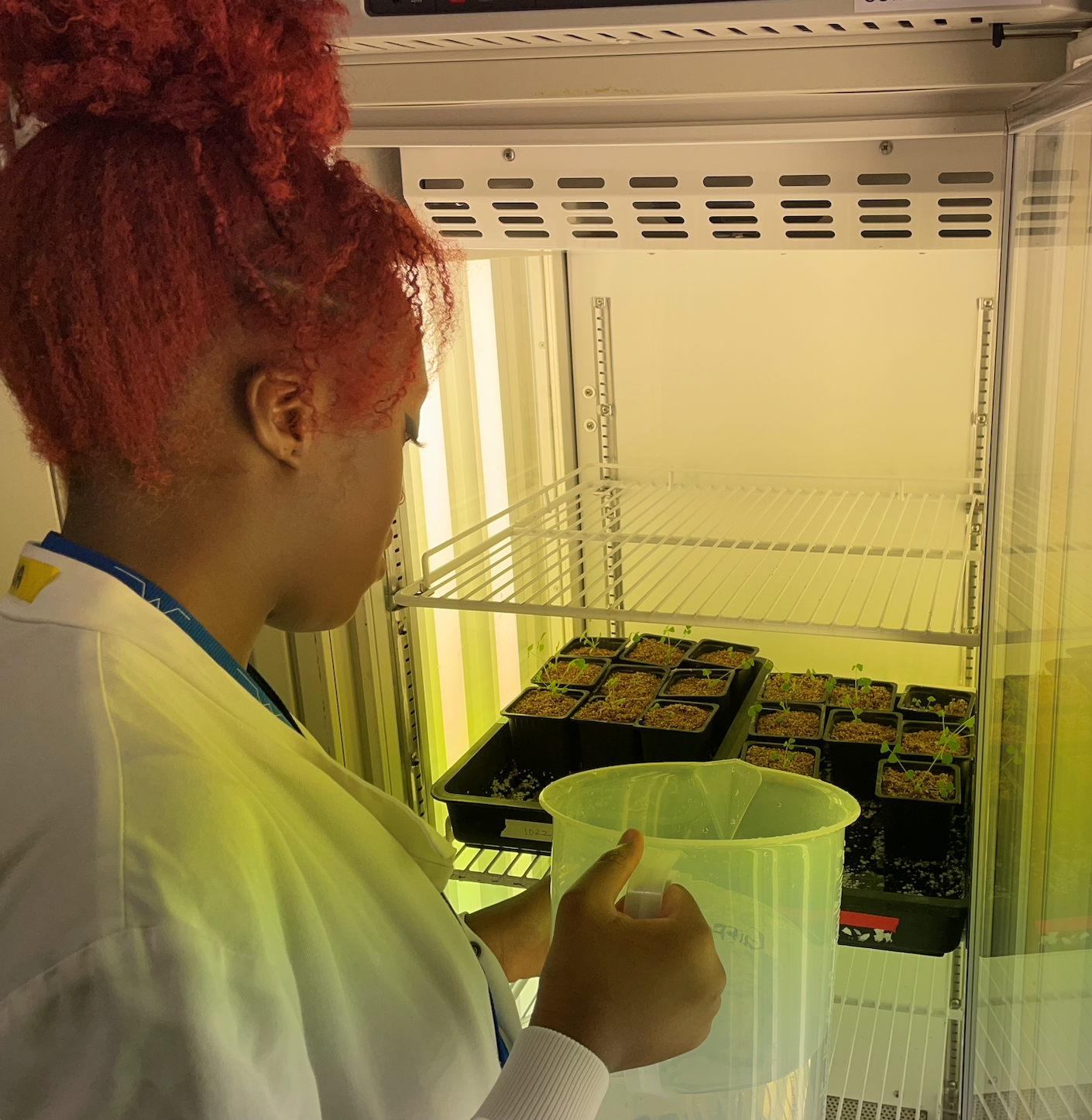
Mimi
I investigated the relationship between the circadian clocks of plants and soil bacteria, using a fluorescent strain of bacteria and fluorescent plant mutants to visualise this. The aim was to see if bacterial rhythms are in sync with and therefore controlled by the roots of plant hosts. I was able to image multiple batches of the plants inoculated with bacteria and put this onto computer software where the rhythms could be seen graphically.
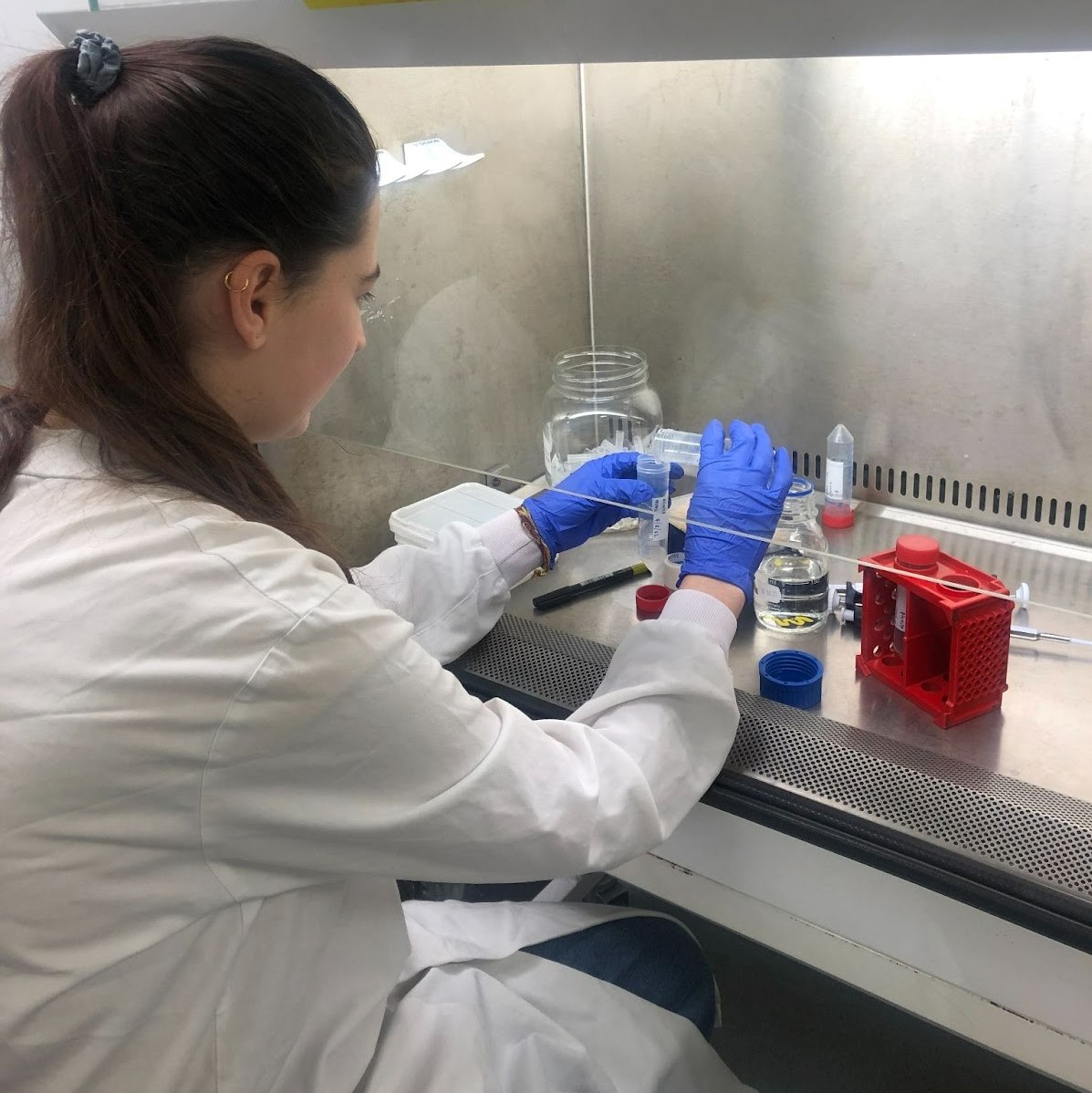
These both are important research areas in reference to their applications in crop production. Specifically for reducing synthetic fertiliser use, which has many detrimental environmental effects, as well as the massive cost increases heightening unaffordability and putting crop yields at risk. Therefore, this research could lead to the production of natural nitrogen-producing fertilisers that optimise already existing plant strategies. This is needed now more than ever as 75% of our diet is directly based on plants with this statistic having a projected increase due to the increase in plant-based meat and milk alternatives.
How we translated the research into a stall
We wanted our stall to be accessible to everyone whilst also translating the scientific methodology. To do this we had to identify the key elements within our research which are vital to portraying the essential components of our research. We made public engagement-friendly posters that focussed on the wider applications and societal importance as well as adding interactive elements to our table to aid with public understanding of scientific concepts. For example:
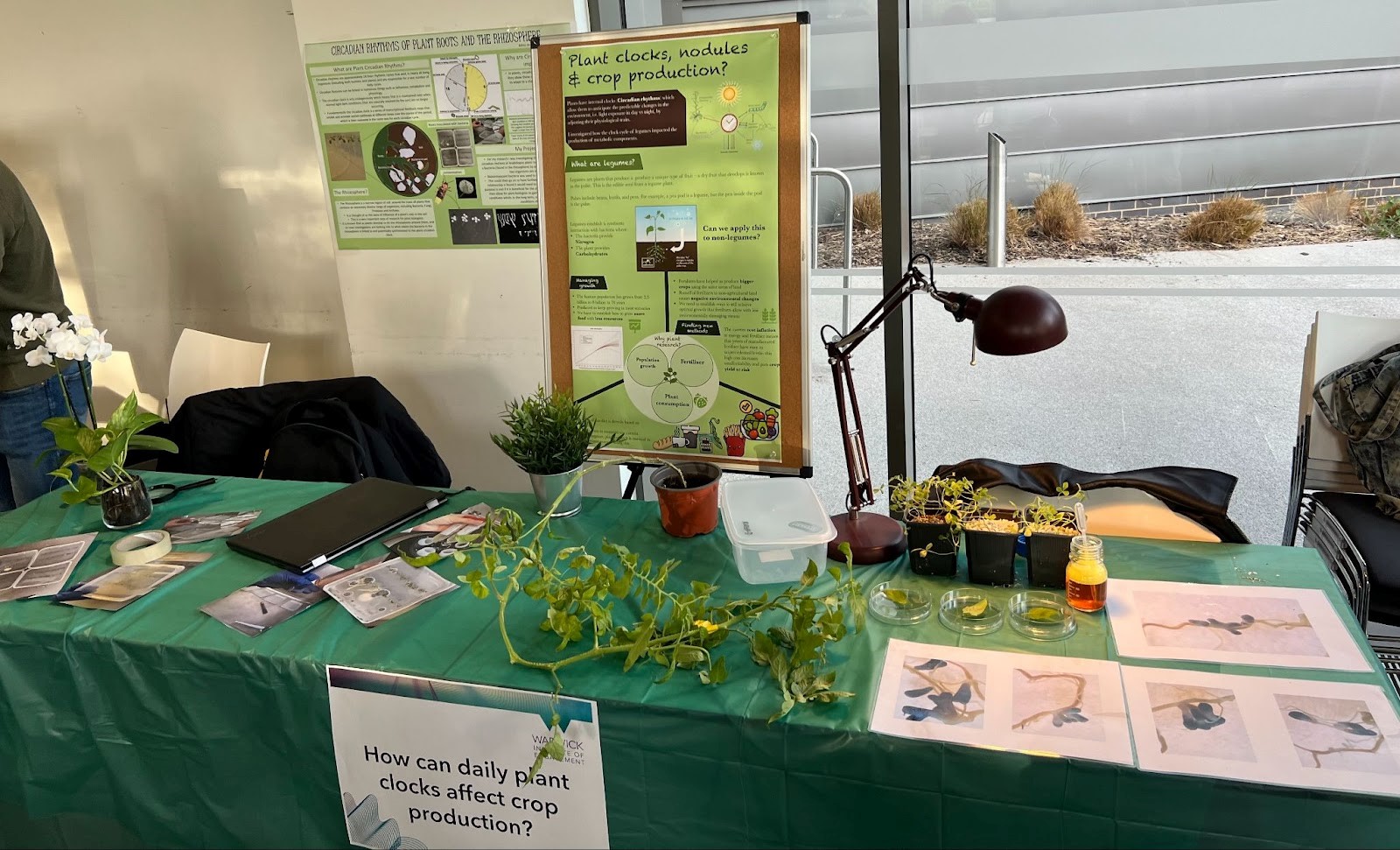
- A faux staining activity where people could participate in a simplified version of an important technique used in the lab
- Images of stained root nodules for visual understanding
- Videos of the luminescent plants and bacteria over a circadian cycle
- Images from the lab of important experimental stages
- Plants with exposed roots to aid with explanation
To tie all these elements together we made the stall look as eye-catching as possible with the hope of increasing the appeal to the public.
Questions
Throughout the evening we were asked a variety of interesting questions both relating to the specific science and also to our approaches and mindsets regarding research in general. For example:
- How do you think this experience has enriched your learning?
- Would you recommend this experience to others?
- Why did you decide to take part in this event?
- How does your research contribute to scientific innovations?
These questions stimulated further thought into our research and motivations, allowing us to view our projects from an outsider's perspective and creating possible new angles to explore within them.
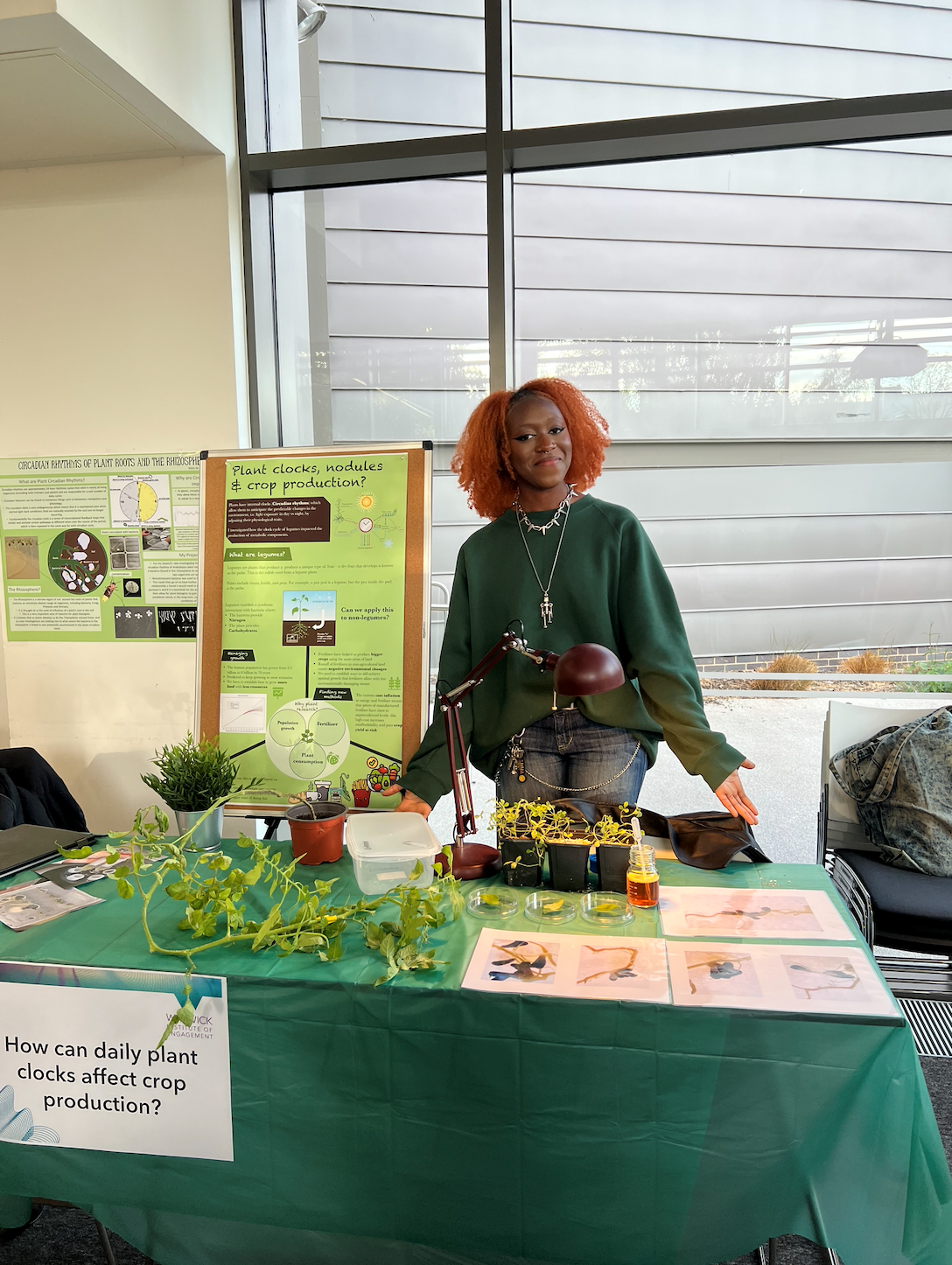
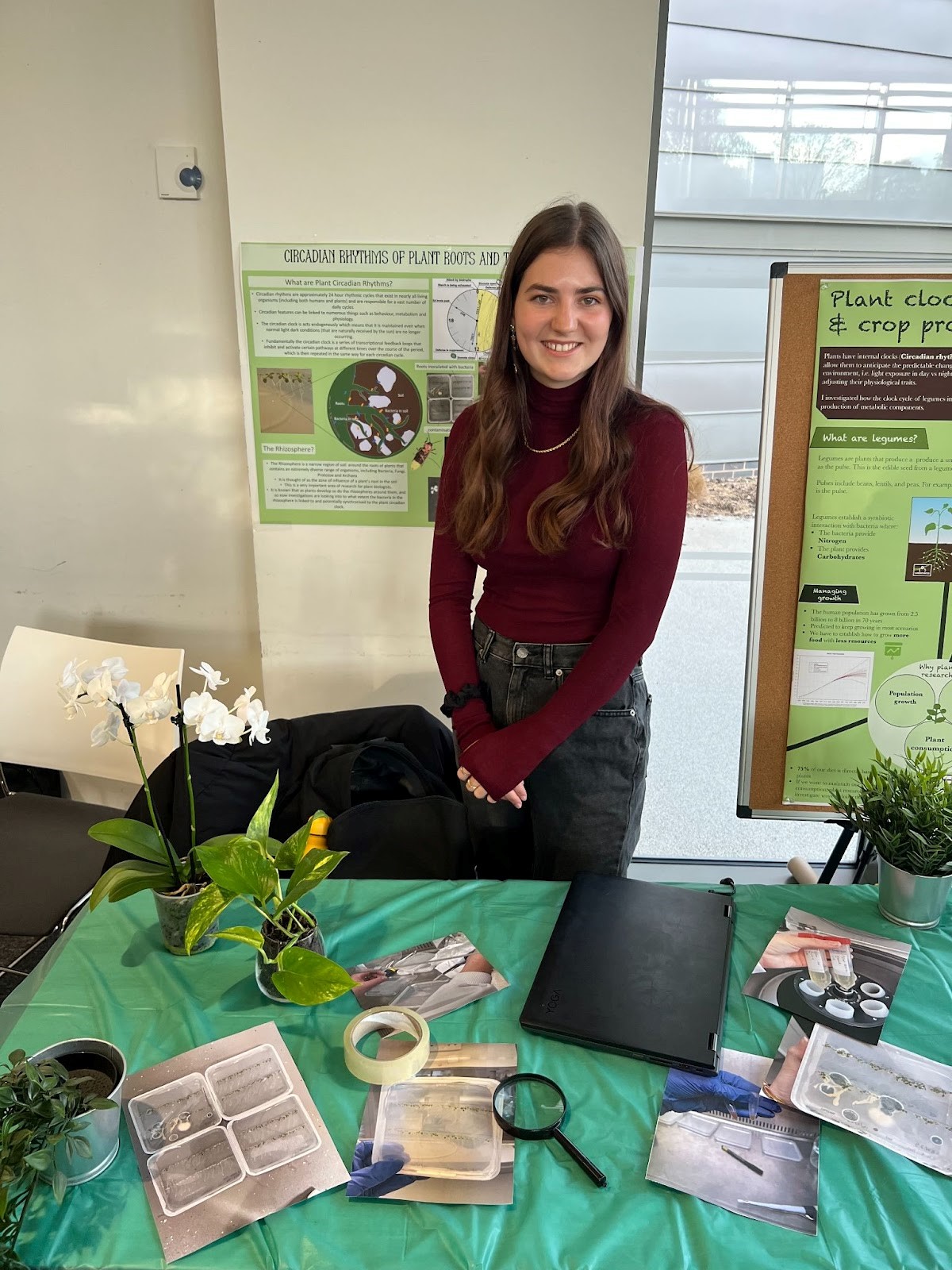
Reflecting on the experience
Before the event, we felt nervous as all of our previous experience presenting research had been to academic staff and other life sciences students and so moving towards an audience with a different level of knowledge was something we had to adapt to and created uncertainty for us.
However, once the event started we got more comfortable and confident in the discussions that we were having. Everyone at the event was friendly and eager to learn which created a positive environment making us feel at ease and excited to have these conversations.
The experience was useful in giving us the opportunity to develop our science communication skills. A significant problem encountered in all aspects of modern science is being able to explain concepts and findings to non-scientists, including investors, policymakers and the general public. Our stall and the conversations that it brought gave us an insight into this and was valuable in providing us with the necessary skill set to bridge this gap between the science and the public.
If we were to do a similar event in the future it would be improved by having even more interactive elements, such as a game so that the attendees can gain a more immersive understanding of the research being presented. We’d also be sure to ask the guests questions to encourage more engaging dialogue and less of a one-sided presentation.
Overall, this was a great opportunity which we learnt a lot from, and we would recommend anyone to do it if given the chance.
Other stalls at the event
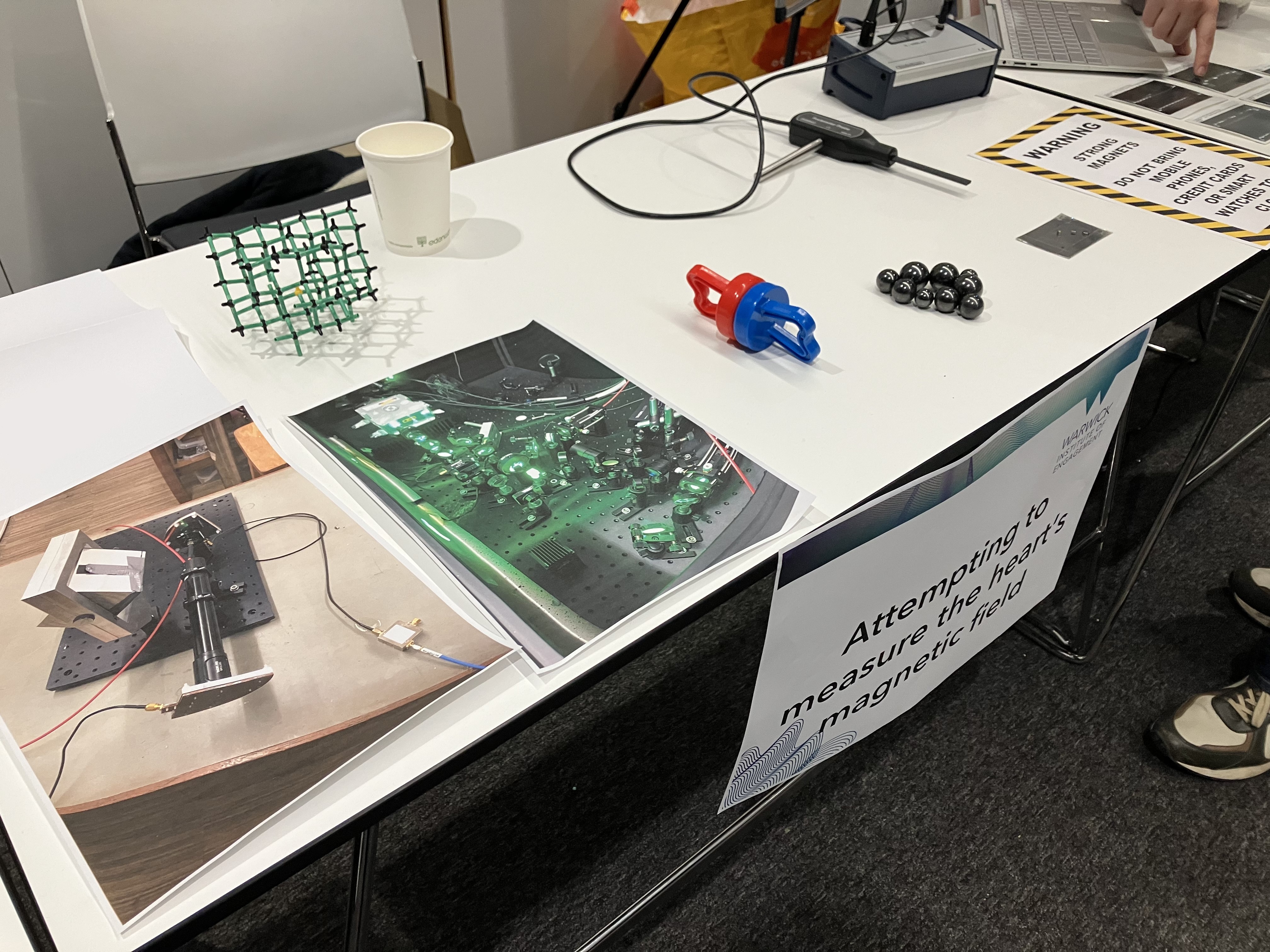
Attempting to measure the heart's magnetic field.
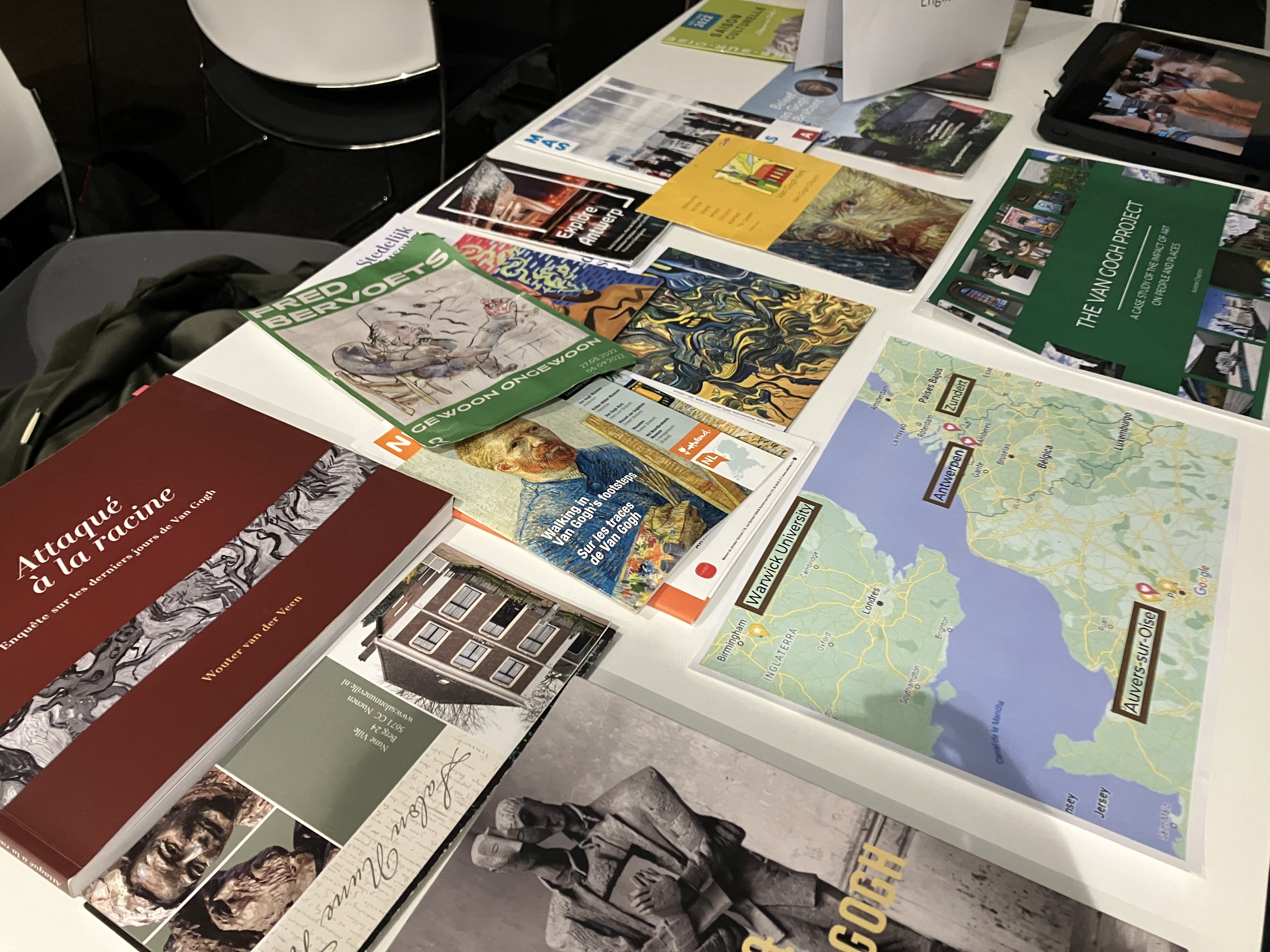
How does Van Gogh's art still impact on people and places?
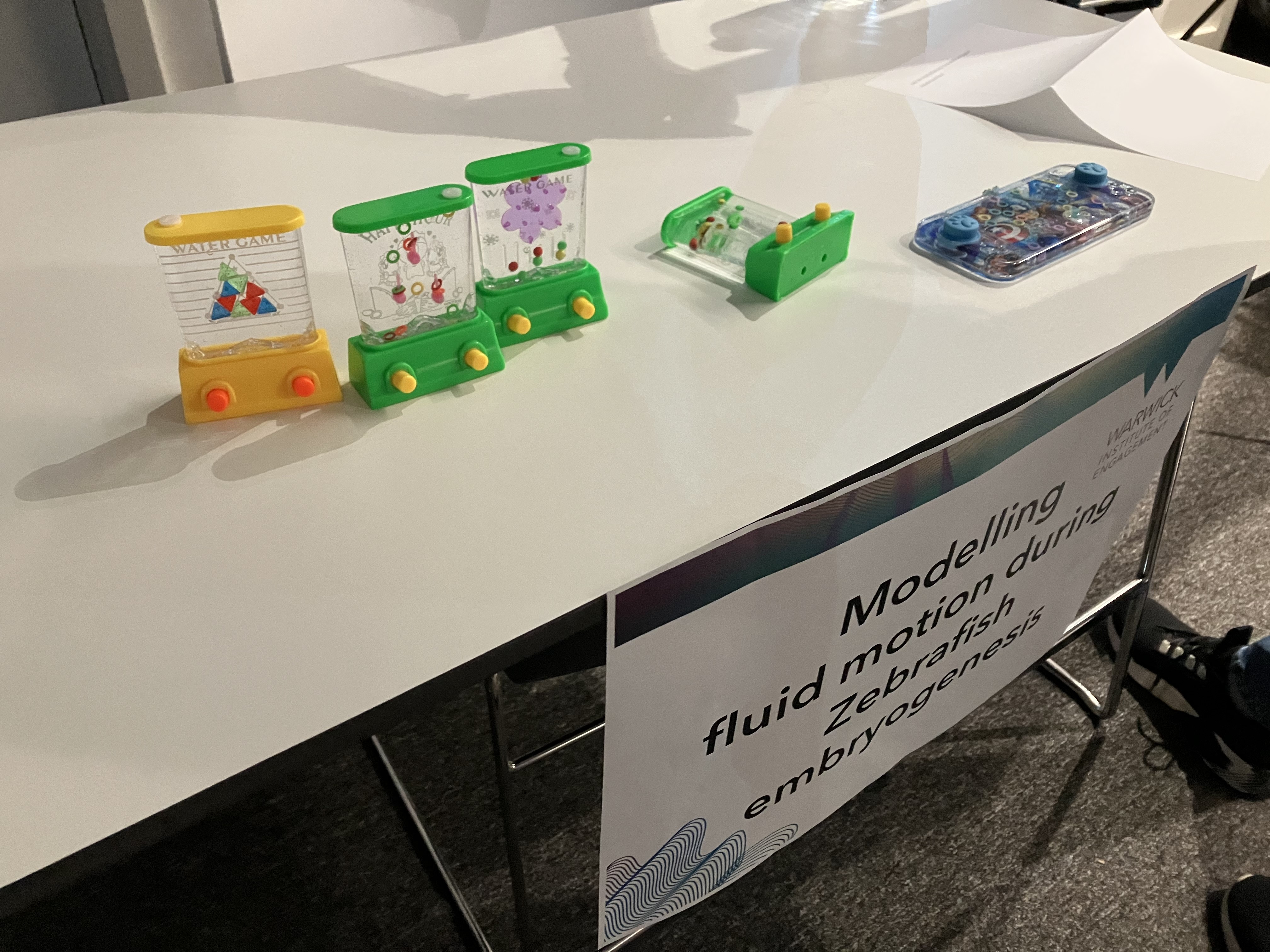
Modelling fluid motion during zebrafish embryogenesis.
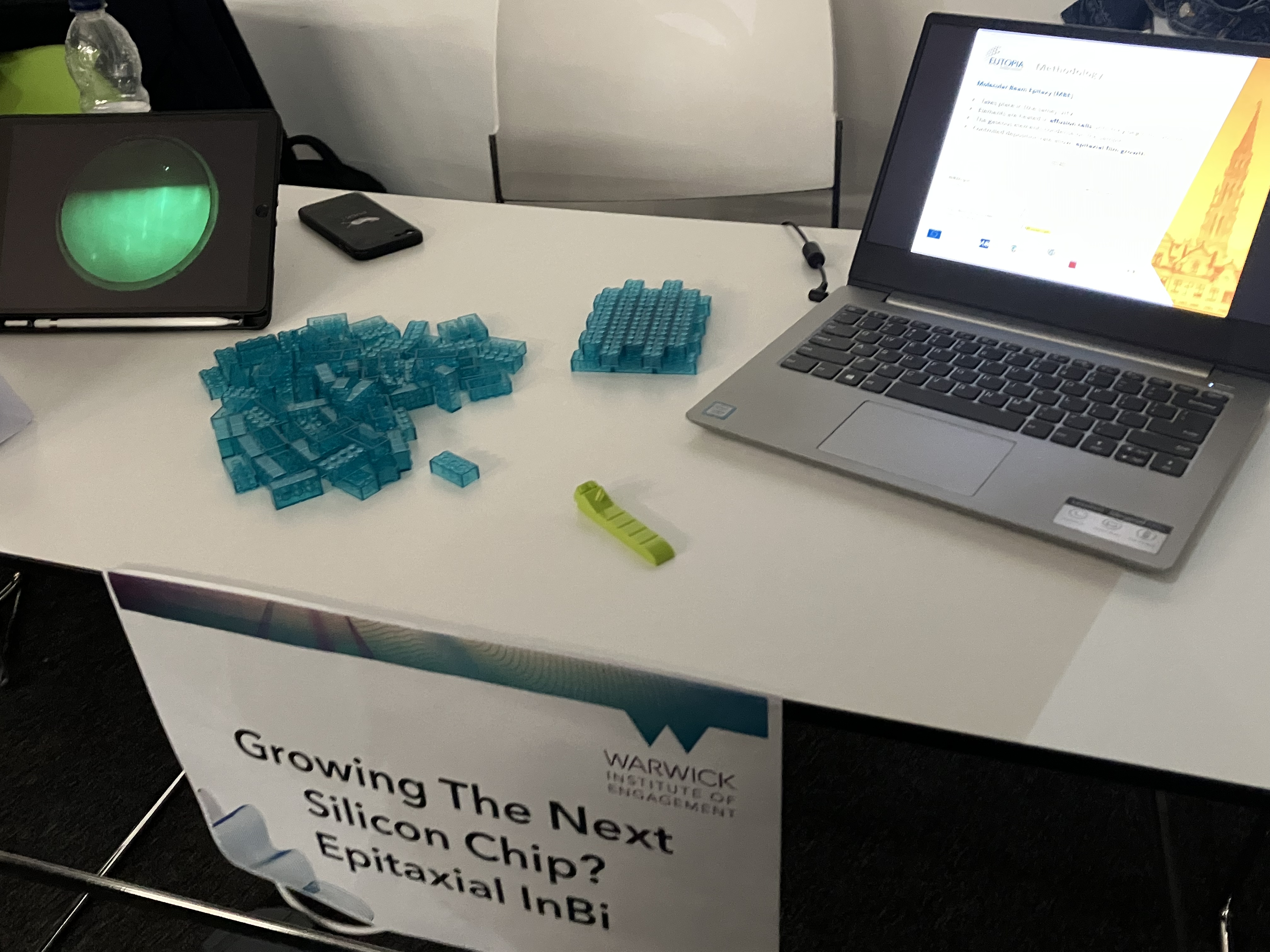
Growing the next silicon chip?
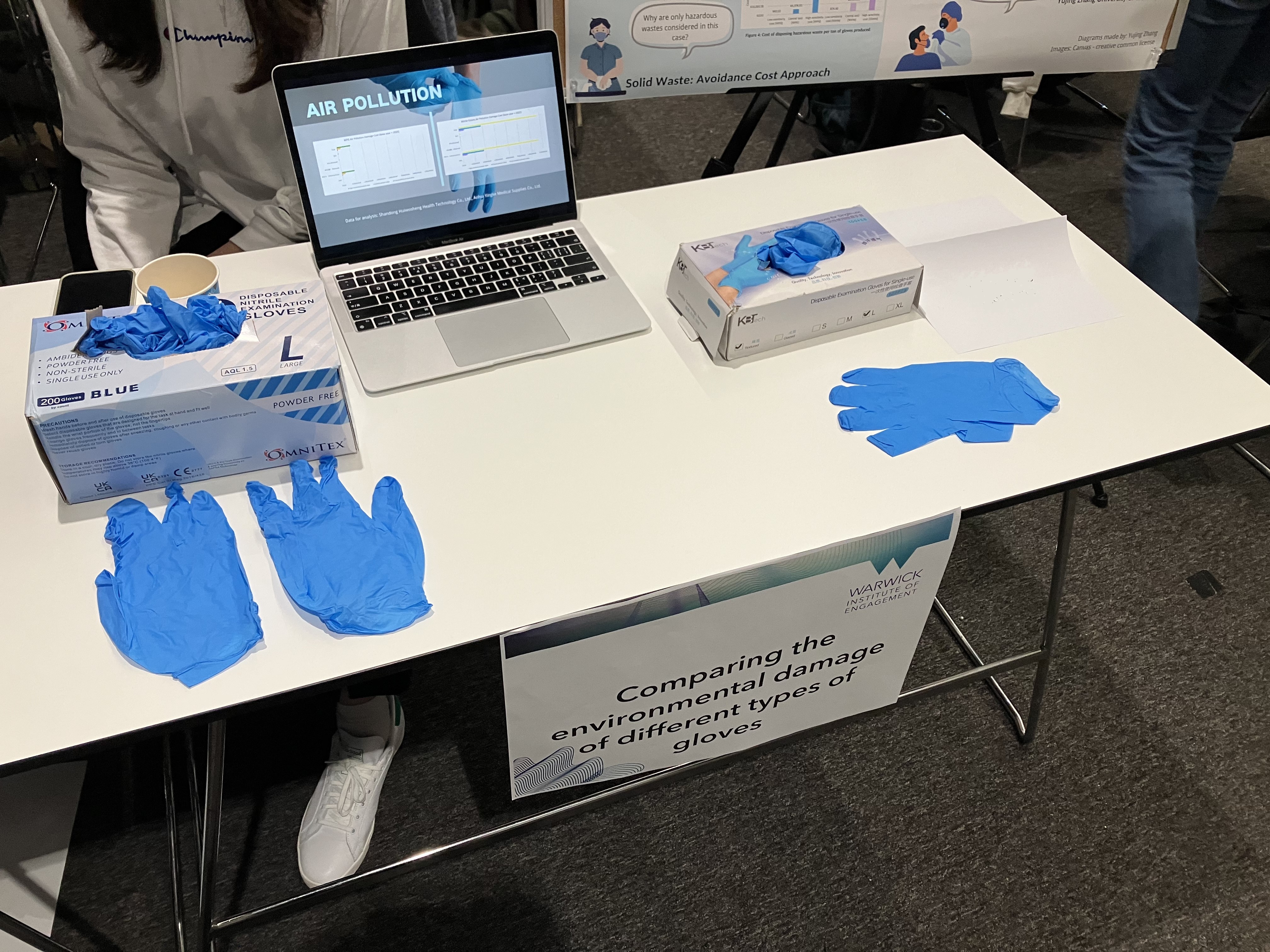
Comparing the environmental damage of different types of gloves.
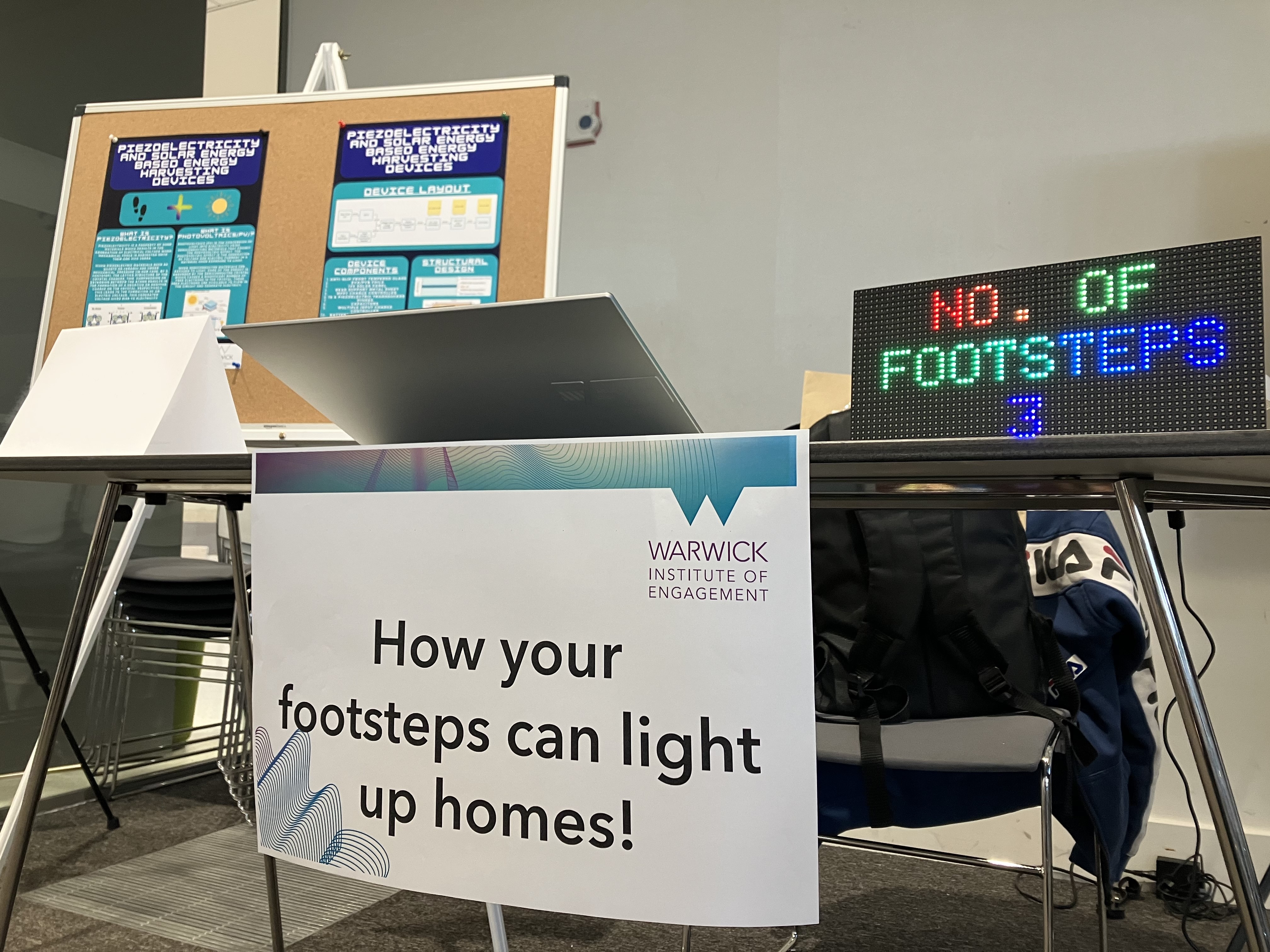
How footsteps can light up homes!
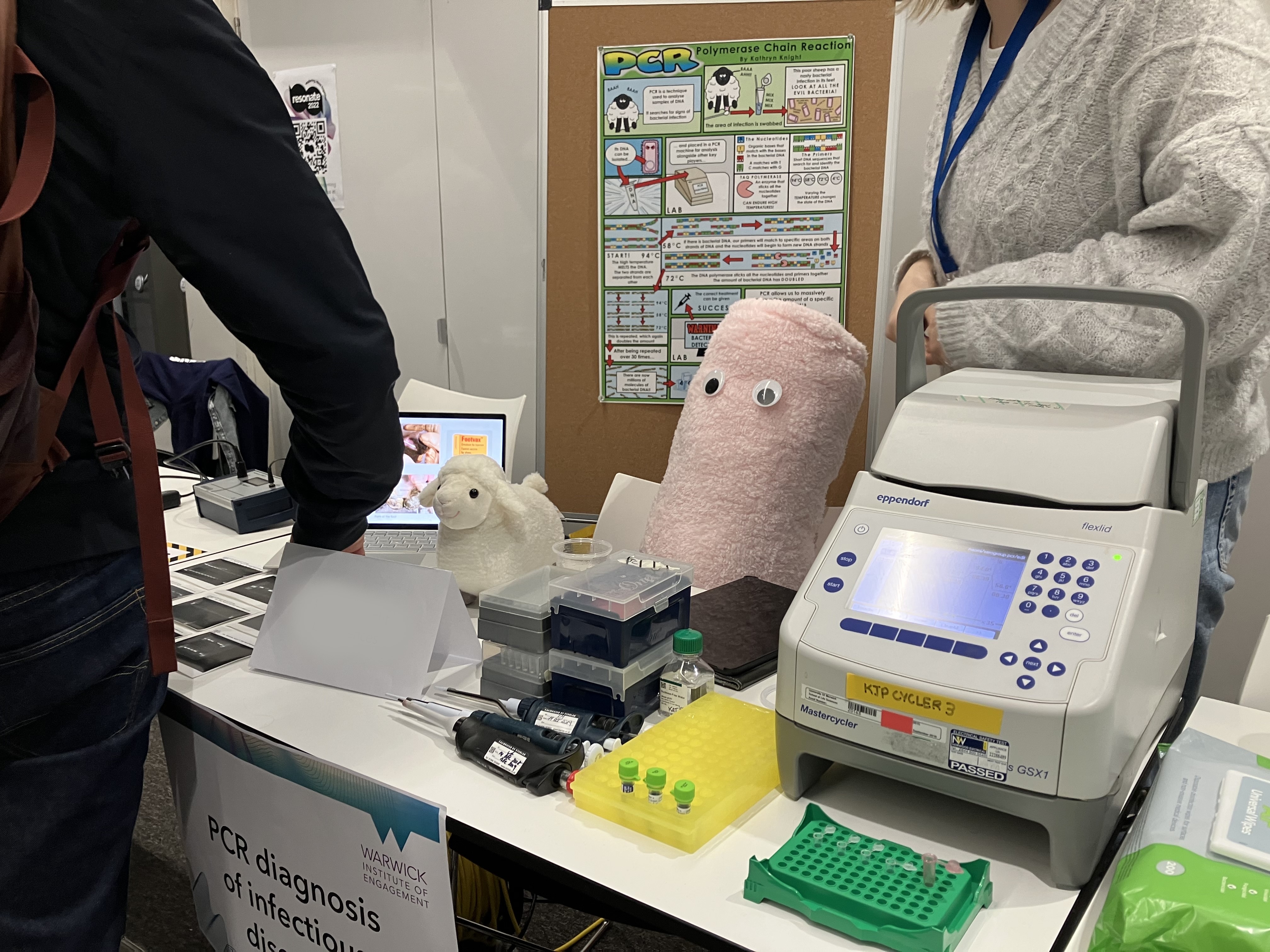
PCR diagnosis of infections diseases.
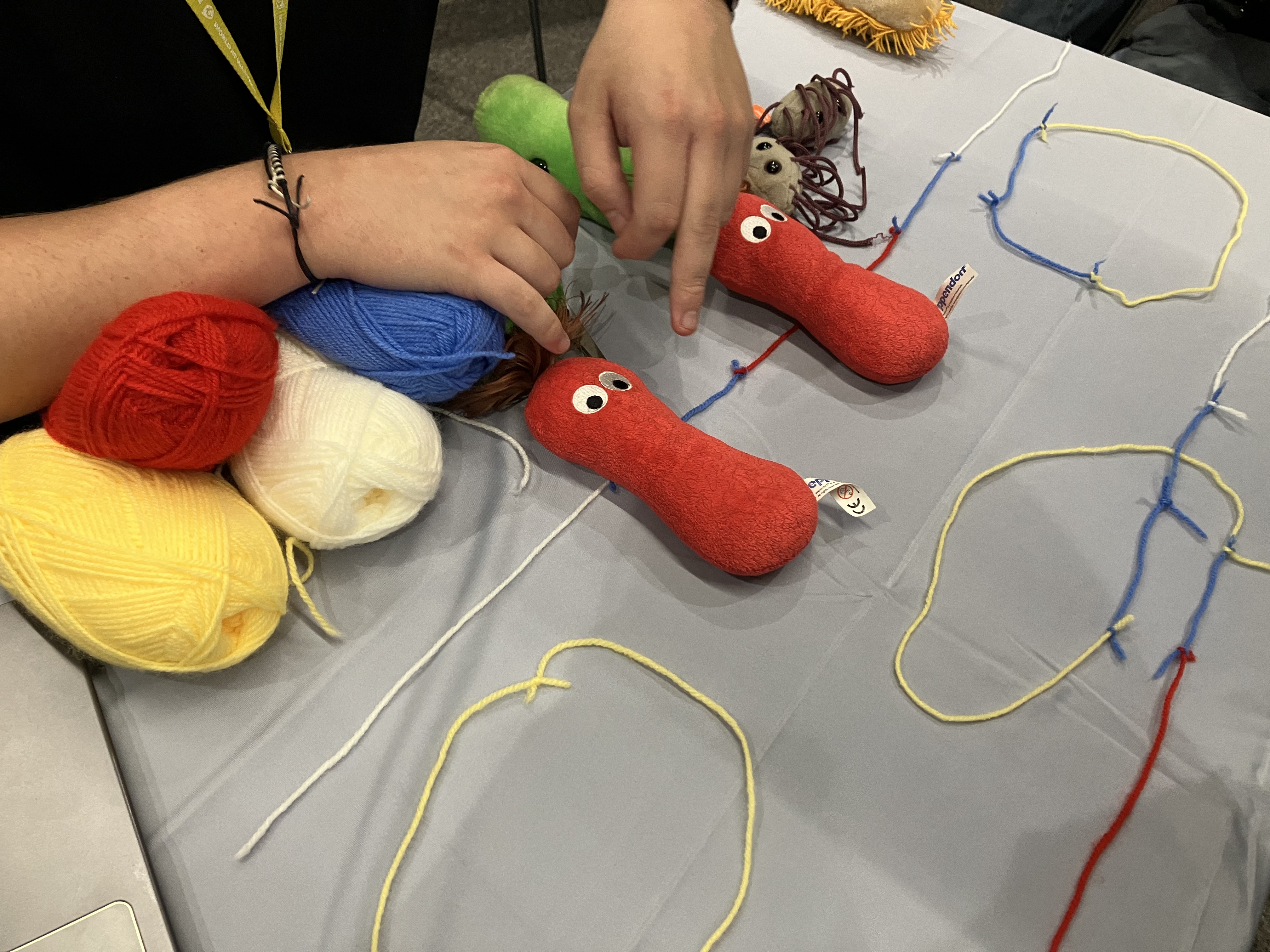
Investigating proteins controlling gut infection.
Students' experiences
"First of all, it has been a massive confidence boost. Also, it has been really helpful in learning how to explain something effectively for people - and practising it over and over again - because if I understand something but I can't communicate it effectively to somebody else, it can't really change anything."
"This has been a really useful experience in order to think about how to explain the research in different ways to different people, or to answer questions that might not have occurred to me."
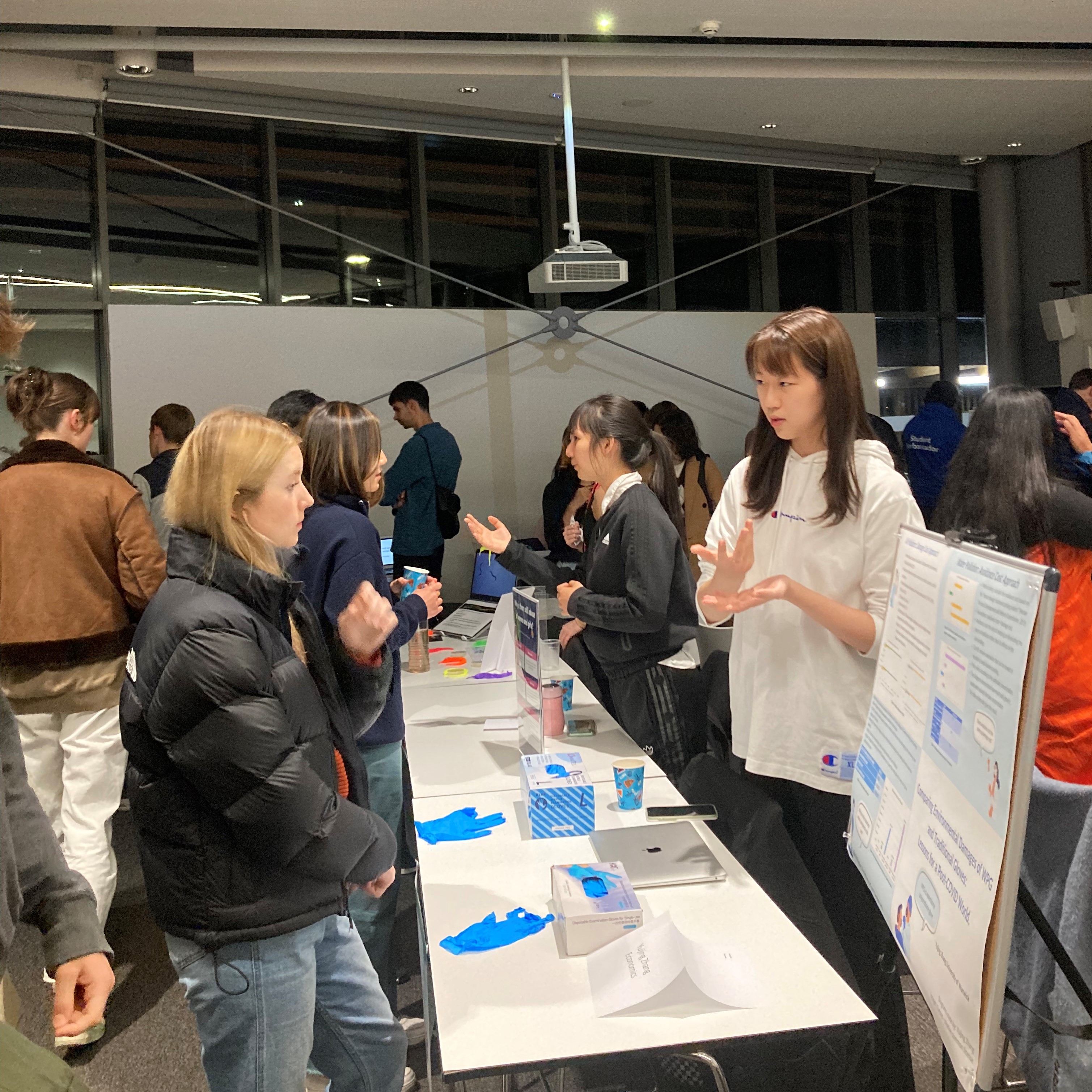
"I found participating in this event really useful because I've never really had to explain my research to anyone before. Having to put it into words has been very challenging but as I go person to person, it becomes easier and easier."
"It has been really useful to talk to different people and get different perspectives on my research. I've been able to think more deeply about other aspects that I didn't think about before. My research is about social capital and I've been able to build connections with people who might be able to help in the future."
"Doing this event has been really helpful, especially because I got to meet so many other students from different disciplines. Seeing how my research interests intersect their interests and how these can be used for developing future research projects was eye-opening and fascinating. I think it speaks to the future we're heading towards - very intersectional and interdisciplinary."
"This public engagement event was really valuable to me because I could represent my research to a whole variety of people, from mathematicians and scientists to humanities and arts students. I feel like that's a really important aspect of research as I got to understand how to represent what I did in a clear, concise way and really stretched not only my own understanding but also my confidence in my work. I also really enjoyed looking at other people's research and understanding the different connections between science and arts."
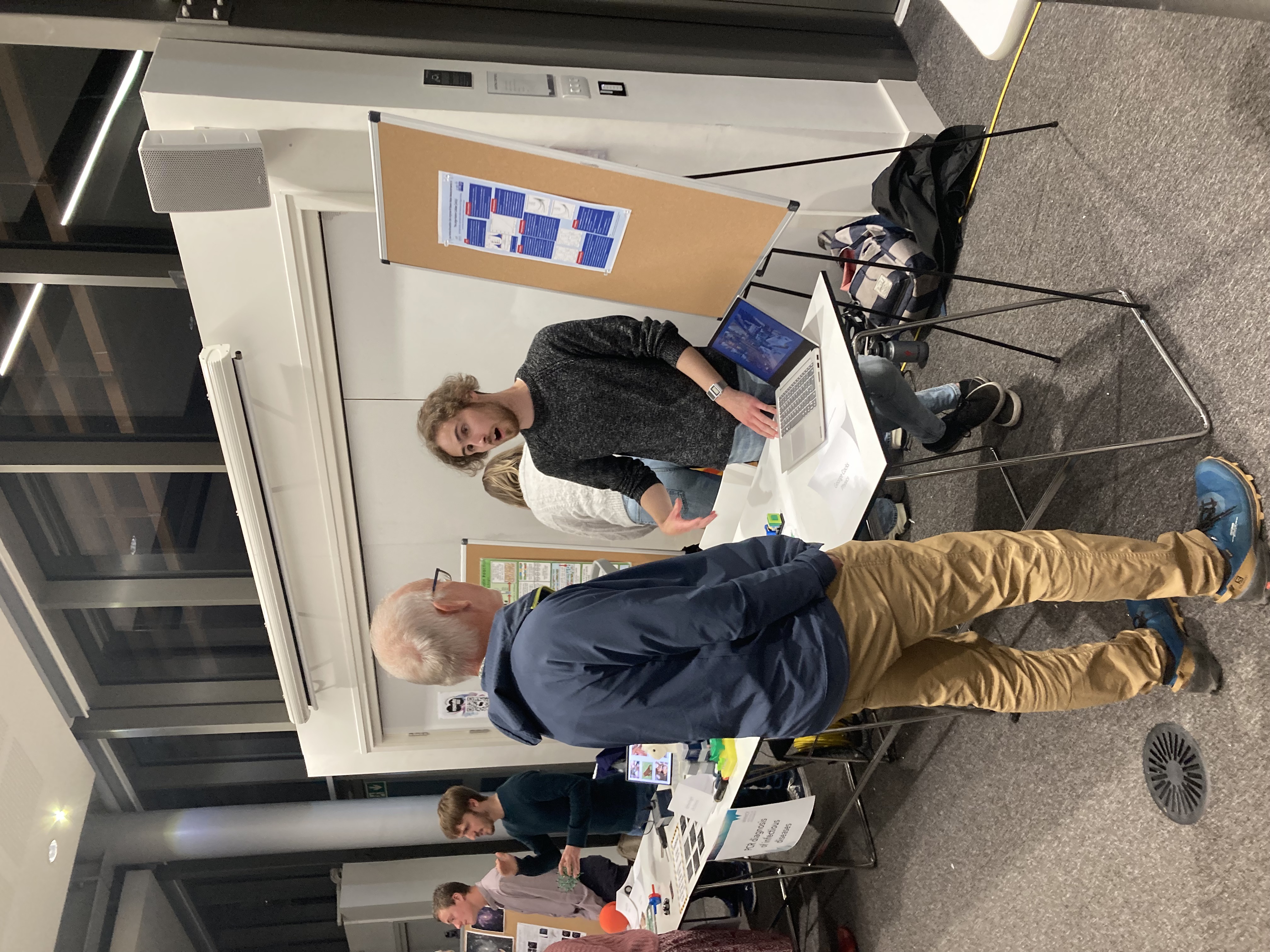
"This experience has been really useful for me because I would like to pursue a career in research, so it has given me a lot of skills that I'll be able to use for my future career."
